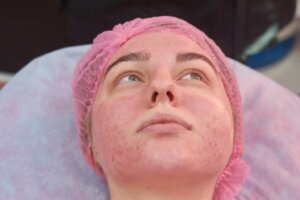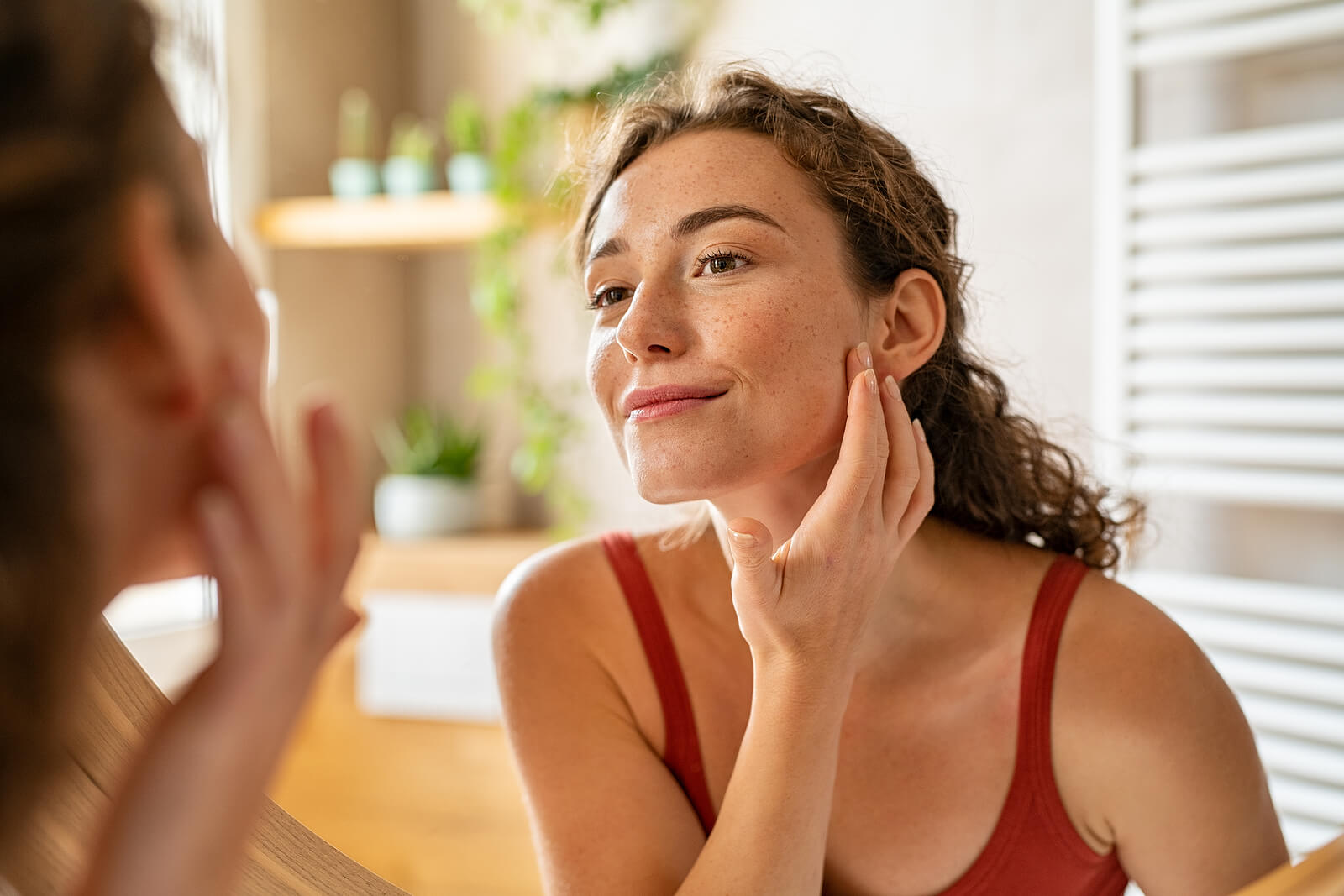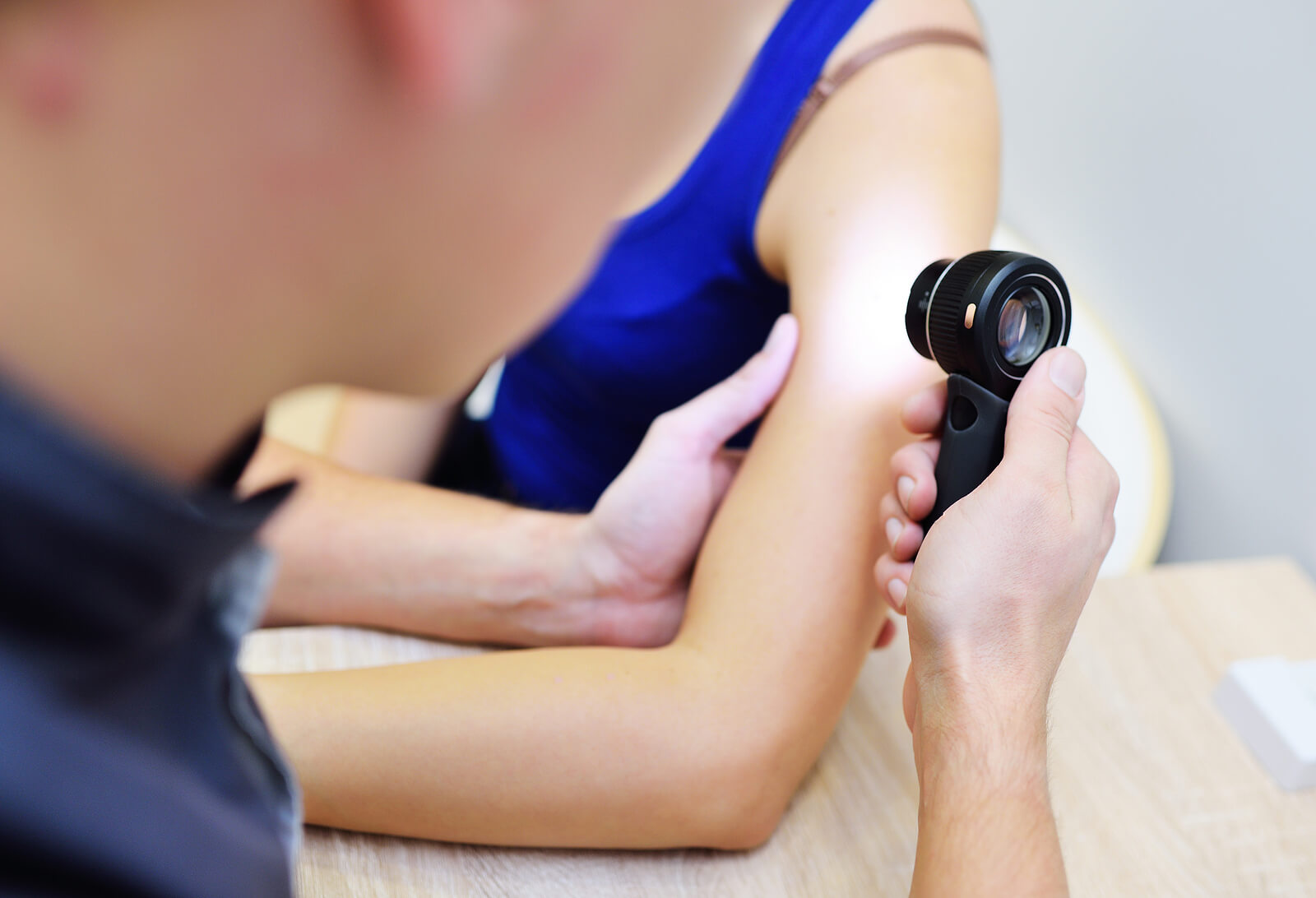Couperose: Everything You Need to Know

Couperose is a name given to a type of skin redness. Now, what does it consist of? Is it some kind of chronic disease? What consequences can it have for the health of the skin and the rest of the body? We will answer this and other questions below.
Sometimes the skin becomes slightly and temporarily red. For example, when it is very cold or we feel especially hot. Also, when we drink a glass of wine, we have a very hot meal, or when we take a very long hot shower. In these cases, it isn’t a cause for concern.
When the skin on the face is easily reddened by factors such as those already mentioned or stress, the redness persists and small dilated vessels can be seen in various parts of it. This is what is known as couperose.
In this regard, Dr. Ana Molina, dermatologist, professor of Dermatology at the Autonomous University of Madrid (UAM) and scientific disseminator, explains the following through her social networks:
“In most people, the redness subsides quickly, but, in these patients, the blood vessels gradually dilate, and they end up being visible through the skin in the form of permanent redness or spider veins.”
It’s common to confuse couperose (a physiological skin condition) with other types of redness, such as rosacea (a disease) or sensitive skin (a more general concept to refer to skin that’s intolerant or hyper-reactive to environmental factors).
Symptoms

As we already mentioned, the main symptom of couperose is diffuse redness of the skin (flushing) that occurs easily with various stimuli. This redness can become permanent in some cases.
The redness is accompanied by the appearance of small varicose veins. These usually appear in the area of the cheeks and cheekbones, as well as on the wings of the nose and chin.
According to an article published on the Elsevier website, in the first phase of couperose, redness and congestion affect the middle of the face, for short periods of time. In the second phase, telangiectasias appear, reddish or red-purplish in color, and the redness becomes more persistent.
Causes
As it produces small varicose veins in various parts of the face, there are those who consider that couperose is associated with microcirculation problems that affect the blood vessels. It’s usually more common in women with fair, fine complexions and sensitive skin.
Some of the most common triggers are excessive sun exposure, alcohol consumption, coffee, tobacco, sudden changes in temperature, spicy food, digestive disorders, continuous use of topical corticosteroids, stress, and intense emotions.
Some consider couperose to be an early form of rosacea.
Prevention
It is necessary to take proper care of skin with couperose so that it doesn’t lead to rosacea over time after the age of 35. To do this, in addition to avoiding triggers, it’s necessary to hydrate the skin and protect it from the sun on a daily basis.
Daily care products should be consistent with skin type. In this way, your skin can be given the cleansing, hydration, moisture, and protection it needs to stay as healthy as possible and look good. Makeup should also be special for sensitive skin.
As the skin of people with couperose tends to be thin, in their case it is necessary to avoid all products that can cause irritation, such as exfoliants (chemical or mechanical) and peels.
When taking a shower or bath, it’s important to be careful with the time and temperature of the water. Saunas aren’t a recommended option.
Avoiding the consumption of alcohol and coffee and maintaining a balanced diet is also recommended. And when it comes to eating, it would be good to avoid both very hot and spicy foods and drinks, since they tend to aggravate the redness of the skin.
Although it isn’t possible to control the weather, it is possible to take precautions to protect the skin from the wind, cold and heat.
Along with all of the above, it is also necessary to take care of emotional health. Nervousness, stress, and other sources of psychological distress must be properly managed both to prevent symptoms from worsening and to enjoy a good quality of life.
Treatment

In the article cited above, the different treatment options for couperose are discussed. These include the following:
- Vascular laser: This helps to improve vasomotor reactions and achieve the elimination of telangiectasias.
- Electrocoagulation: This is a simple procedure that, although it doesn’t improve the underlying erythema and may cause discomfort, it is useful to treat the most superficial vessels in some cases.
- Cosmetic treatment: Combines prevention measures (which also serve as self-care) with some recommendations, such as:
- Avoiding the use of cosmetic products with alcohol. Also solvents in high concentrations (such as propylene glycol and ethanol).
- Removing make-up or cleanse the face with alcohol-free make-up removal milks and toners.
- Using a dermatological bread suitable for sensitive skin (which are like bars of soap, but without irritating surfactants).
- Being careful with cosmetic products that contain certain preservatives, as they can cause irritation.
Only a dermatologist can perform the treatment of couperose. Therefore, it isn’t recommended to use over-the-counter products or home remedies for sensitive skin. It’s preferable to wait and receive the guidelines of the specialist, than to risk and then suffer complications, and not obtain the desired results.
Couperose is a name given to a type of skin redness. Now, what does it consist of? Is it some kind of chronic disease? What consequences can it have for the health of the skin and the rest of the body? We will answer this and other questions below.
Sometimes the skin becomes slightly and temporarily red. For example, when it is very cold or we feel especially hot. Also, when we drink a glass of wine, we have a very hot meal, or when we take a very long hot shower. In these cases, it isn’t a cause for concern.
When the skin on the face is easily reddened by factors such as those already mentioned or stress, the redness persists and small dilated vessels can be seen in various parts of it. This is what is known as couperose.
In this regard, Dr. Ana Molina, dermatologist, professor of Dermatology at the Autonomous University of Madrid (UAM) and scientific disseminator, explains the following through her social networks:
“In most people, the redness subsides quickly, but, in these patients, the blood vessels gradually dilate, and they end up being visible through the skin in the form of permanent redness or spider veins.”
It’s common to confuse couperose (a physiological skin condition) with other types of redness, such as rosacea (a disease) or sensitive skin (a more general concept to refer to skin that’s intolerant or hyper-reactive to environmental factors).
Symptoms

As we already mentioned, the main symptom of couperose is diffuse redness of the skin (flushing) that occurs easily with various stimuli. This redness can become permanent in some cases.
The redness is accompanied by the appearance of small varicose veins. These usually appear in the area of the cheeks and cheekbones, as well as on the wings of the nose and chin.
According to an article published on the Elsevier website, in the first phase of couperose, redness and congestion affect the middle of the face, for short periods of time. In the second phase, telangiectasias appear, reddish or red-purplish in color, and the redness becomes more persistent.
Causes
As it produces small varicose veins in various parts of the face, there are those who consider that couperose is associated with microcirculation problems that affect the blood vessels. It’s usually more common in women with fair, fine complexions and sensitive skin.
Some of the most common triggers are excessive sun exposure, alcohol consumption, coffee, tobacco, sudden changes in temperature, spicy food, digestive disorders, continuous use of topical corticosteroids, stress, and intense emotions.
Some consider couperose to be an early form of rosacea.
Prevention
It is necessary to take proper care of skin with couperose so that it doesn’t lead to rosacea over time after the age of 35. To do this, in addition to avoiding triggers, it’s necessary to hydrate the skin and protect it from the sun on a daily basis.
Daily care products should be consistent with skin type. In this way, your skin can be given the cleansing, hydration, moisture, and protection it needs to stay as healthy as possible and look good. Makeup should also be special for sensitive skin.
As the skin of people with couperose tends to be thin, in their case it is necessary to avoid all products that can cause irritation, such as exfoliants (chemical or mechanical) and peels.
When taking a shower or bath, it’s important to be careful with the time and temperature of the water. Saunas aren’t a recommended option.
Avoiding the consumption of alcohol and coffee and maintaining a balanced diet is also recommended. And when it comes to eating, it would be good to avoid both very hot and spicy foods and drinks, since they tend to aggravate the redness of the skin.
Although it isn’t possible to control the weather, it is possible to take precautions to protect the skin from the wind, cold and heat.
Along with all of the above, it is also necessary to take care of emotional health. Nervousness, stress, and other sources of psychological distress must be properly managed both to prevent symptoms from worsening and to enjoy a good quality of life.
Treatment

In the article cited above, the different treatment options for couperose are discussed. These include the following:
- Vascular laser: This helps to improve vasomotor reactions and achieve the elimination of telangiectasias.
- Electrocoagulation: This is a simple procedure that, although it doesn’t improve the underlying erythema and may cause discomfort, it is useful to treat the most superficial vessels in some cases.
- Cosmetic treatment: Combines prevention measures (which also serve as self-care) with some recommendations, such as:
- Avoiding the use of cosmetic products with alcohol. Also solvents in high concentrations (such as propylene glycol and ethanol).
- Removing make-up or cleanse the face with alcohol-free make-up removal milks and toners.
- Using a dermatological bread suitable for sensitive skin (which are like bars of soap, but without irritating surfactants).
- Being careful with cosmetic products that contain certain preservatives, as they can cause irritation.
Only a dermatologist can perform the treatment of couperose. Therefore, it isn’t recommended to use over-the-counter products or home remedies for sensitive skin. It’s preferable to wait and receive the guidelines of the specialist, than to risk and then suffer complications, and not obtain the desired results.
- Codina A. Cuperosis. Offarm [Internet]. 2006 [cited 2021 Jul 10];25(10):80–4. Available from: https://www.elsevier.es/es-revista-offarm-4-articulo-cuperosis-13095505
- Conoce los tipos de manchas en la piel : Antiaging Group Barcelona [Internet]. [cited 2021 Jul 10]. Available from: https://www.antiaginggroupbarcelona.com/blog/tipos-manchas-en-la-piel/
Este texto se ofrece únicamente con propósitos informativos y no reemplaza la consulta con un profesional. Ante dudas, consulta a tu especialista.







